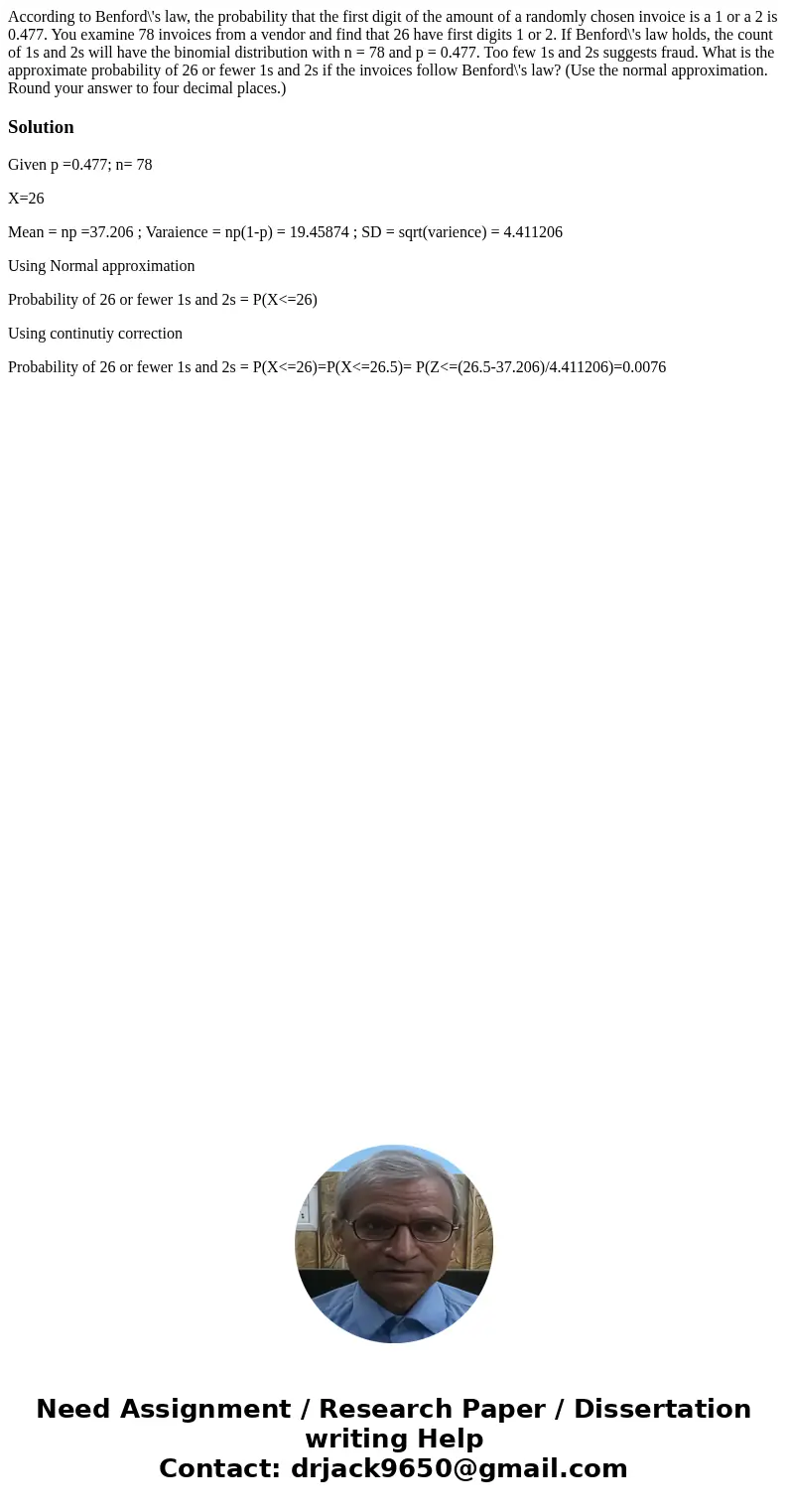According to Benfords law the probability that the first dig
According to Benford\'s law, the probability that the first digit of the amount of a randomly chosen invoice is a 1 or a 2 is 0.477. You examine 78 invoices from a vendor and find that 26 have first digits 1 or 2. If Benford\'s law holds, the count of 1s and 2s will have the binomial distribution with n = 78 and p = 0.477. Too few 1s and 2s suggests fraud. What is the approximate probability of 26 or fewer 1s and 2s if the invoices follow Benford\'s law? (Use the normal approximation. Round your answer to four decimal places.)
Solution
Given p =0.477; n= 78
X=26
Mean = np =37.206 ; Varaience = np(1-p) = 19.45874 ; SD = sqrt(varience) = 4.411206
Using Normal approximation
Probability of 26 or fewer 1s and 2s = P(X<=26)
Using continutiy correction
Probability of 26 or fewer 1s and 2s = P(X<=26)=P(X<=26.5)= P(Z<=(26.5-37.206)/4.411206)=0.0076

 Homework Sourse
Homework Sourse